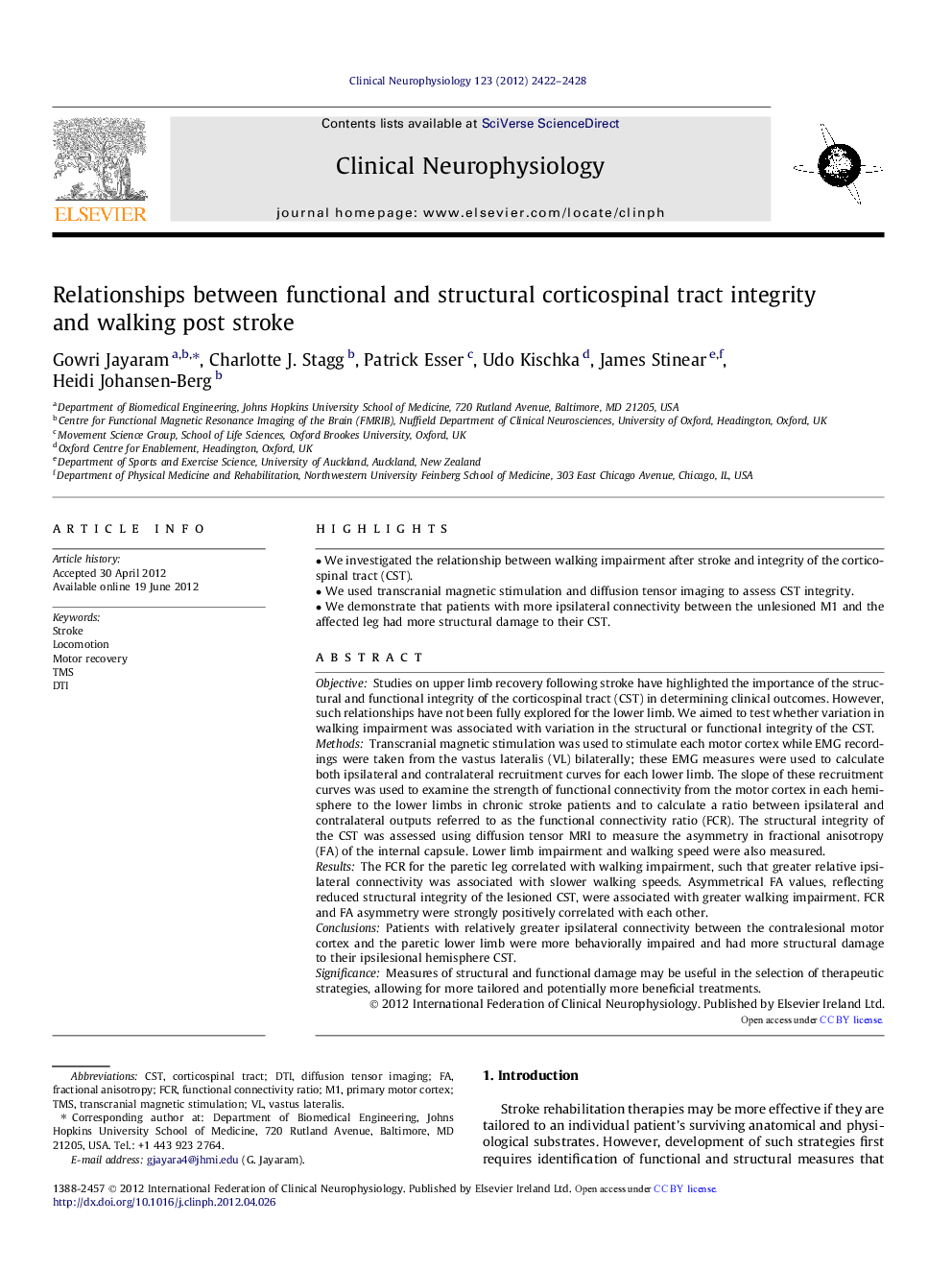| Article ID | Journal | Published Year | Pages | File Type |
|---|---|---|---|---|
| 6008642 | Clinical Neurophysiology | 2012 | 7 Pages |
ObjectiveStudies on upper limb recovery following stroke have highlighted the importance of the structural and functional integrity of the corticospinal tract (CST) in determining clinical outcomes. However, such relationships have not been fully explored for the lower limb. We aimed to test whether variation in walking impairment was associated with variation in the structural or functional integrity of the CST.MethodsTranscranial magnetic stimulation was used to stimulate each motor cortex while EMG recordings were taken from the vastus lateralis (VL) bilaterally; these EMG measures were used to calculate both ipsilateral and contralateral recruitment curves for each lower limb. The slope of these recruitment curves was used to examine the strength of functional connectivity from the motor cortex in each hemisphere to the lower limbs in chronic stroke patients and to calculate a ratio between ipsilateral and contralateral outputs referred to as the functional connectivity ratio (FCR). The structural integrity of the CST was assessed using diffusion tensor MRI to measure the asymmetry in fractional anisotropy (FA) of the internal capsule. Lower limb impairment and walking speed were also measured.ResultsThe FCR for the paretic leg correlated with walking impairment, such that greater relative ipsilateral connectivity was associated with slower walking speeds. Asymmetrical FA values, reflecting reduced structural integrity of the lesioned CST, were associated with greater walking impairment. FCR and FA asymmetry were strongly positively correlated with each other.ConclusionsPatients with relatively greater ipsilateral connectivity between the contralesional motor cortex and the paretic lower limb were more behaviorally impaired and had more structural damage to their ipsilesional hemisphere CST.SignificanceMeasures of structural and functional damage may be useful in the selection of therapeutic strategies, allowing for more tailored and potentially more beneficial treatments.
⺠We investigated the relationship between walking impairment after stroke and integrity of the corticospinal tract (CST). ⺠We used transcranial magnetic stimulation and diffusion tensor imaging to assess CST integrity. ⺠We demonstrate that patients with more ipsilateral connectivity between the unlesioned M1 and the affected leg had more structural damage to their CST.
